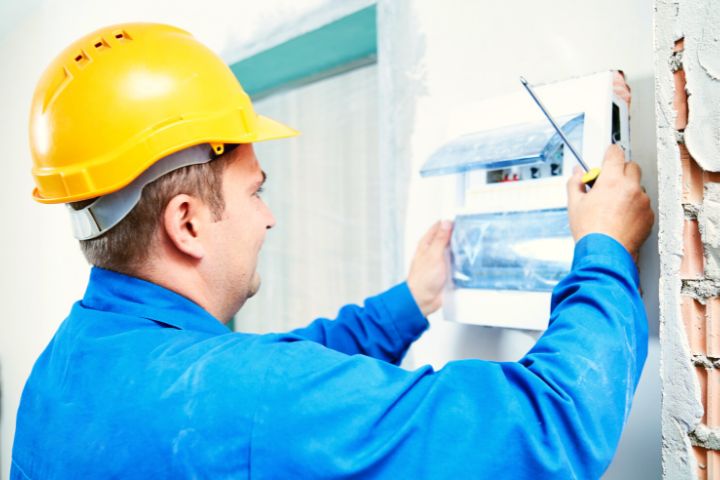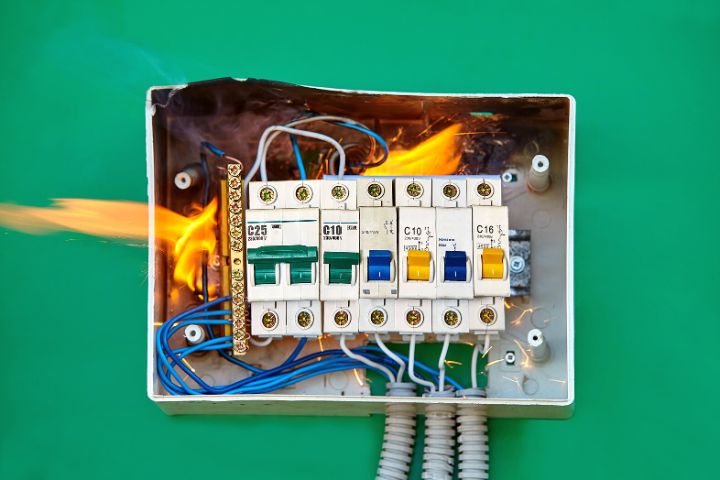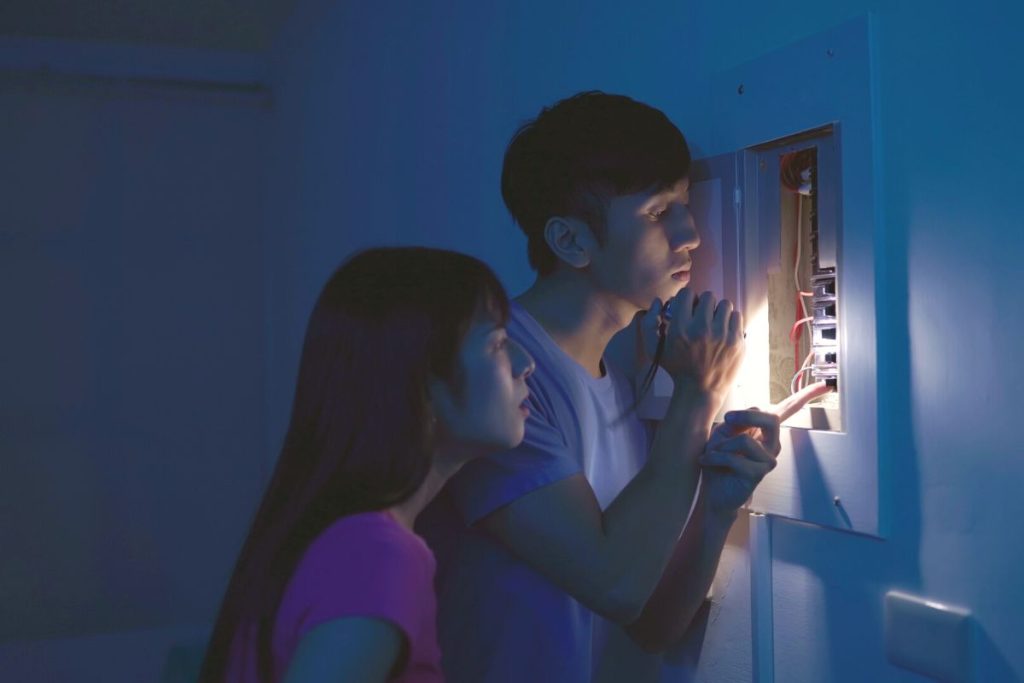When it comes to powering up your Brisbane home and having all your electronics, lights, appliances and plug sockets running smoothly, your switchboard is the most crucial element. It acts as the motherboard which distributes the necessary amounts of power and regulates live electricity. More importantly, switchboards have a safety mechanism that stops power supply when something is not quite right, preventing what could be a devastating tragedy – a house fire!
With it being so important in our daily lives, it’s important to pay attention to whether it’s old or outdated. A switchboard upgrade can give you invaluable peace of mind. The good news is that a new switchboard can last for many years to come.
We strongly recommend having your switchboard checked. A lot of Brisbane homes still have pre 1990s switchboards that may not be up to current standards. Back then, we did not have a lot of the appliances we do know and our energy needs were vastly different. Another factor is that some switchboards may contain asbestos – yes, the dangerously cancerous material is often present in old devices.
Related Topic: What to do if my safety switch has tripped?
What does my switchboard do?
Simply put, switchboards divide electricity and distribute it to various parts of a building or home depending on demand. A switchboard can be quite complex and has a number of important parts. Electricians spend a fair bit of their training learning about them.
Busbars are aluminum or copper strips which are imperative from a safety aspect. They send out power to devices connected to the circuit from cable conductors. They are also connected to a number of disconnectors and breakers, often referred to as switchgear or relays, which regulate faults and shut equipment off when necessary.
Electrical panels redirect electricity. They come with a number of switches which control the flow of electricity through the circuit and interrupt it if needed. The size of the building will determine how many electrical panels are installed, as a small building will only need one whilst a larger building will have multiple.
Protective devices come in the form of a circuit breaker or a fuse. If a high voltage of electricity surges through these kick into action and prevent the voltage from overloading any one particular appliance, leading to irreparable damage or even a fire.
Why should I upgrade my electrical switchboard?

Switchboards are often neglected and forgotten about but given how important they are to our homes and buildings, it’s imperative to keep an eye on them and replace them when necessary. Here are some reasons why you should upgrade your switchboard.
- Asbestos! – Believe it or not, for a 50-year period up until the 1980s, all throughout Australia Asbestos was used in the installation of switchboards. It wasn’t until 2003 that the use of it was completely stopped and it was mostly used as the backing panel of a switchboard. Given all we know now about Asbestos, and its risks to our health, it’s important to replace any of the asbestos-included switchboards which still around today. Given how long a switchboard can last, if one was installed during the 90s for example, it’s quite likely your home still has one of these switchboards. Be sure to call in a professional when removing the asbestos.
- Safety switches – Safety mechanisms and laws have upgraded alongside technology and safety switches on switchboards have become mandatory. This is to add a further layer of safety which can kill the current if an excess amount is discharged. If your switchboard doesn’t have a safety switch then you need to upgrade it.
- Increase in power demand – A modern-day home uses more appliances and electricity in general than homes of the past 20 years and beyond. The switchboards of the past, which can still do a job, do not necessarily have the capabilities to sustain the power demand of today, which can lead to tripping or malfunctioning. Therefore if your switchboard is old it’s best to get a modern one installed.
- Save money on your electric bill – newer switchboards are more efficient compared to their older counterparts leading to them being better on your pocket. They also break down less which reduces the amount you are forced to spend on calling out electricians and repairs.
Signs you should upgrade your switchboard
There are a few signs your switchboard gives when it’s trying to tell you that it can no longer cope with the workload it’s being asked of. The primary signs you should look out for are if the fuses continue to trip, killing all the electricity in the house, and forcing you to reset the power switch. Once this starts happening you should make plans for a replacement.
Another more risky sign is if a buzzing noise starts to appear from the switchboard which usually happens when the wiring is on its last legs. The final, and most dangerous risk of keeping an outdated switchboard is a fire occurring. Naturally, you should try and do everything possible to ensure it doesn’t get to this.

When should I upgrade my electrical switchboard?
Replacing your switchboard means being powerless for a period of time. This means you should plan for when you replace the switchboard. Here are some suggestions of when you should do it;
- When first buying a home – particularly if it’s an old one
- When renovating your home
- Before installing a solar panel system
- If adding a large appliance to your home such as air conditioning, hot water systems, oven and stove – as these will take up significantly more electricity
FAQs
How Often Do I Need to Maintain My Switchboard?
Running a thorough check every few months to twice a year can make a big difference in costs, upkeep and general safety. However, once a year, it’s best to get a skilled technician or professional to properly test run the RCD feature. Timing the RCD feature is also a crucial part of maintenance, as every second counts when you’re in a serious situation that can affect the health and safety of you and your loved ones.
It’s also generally advised to ensure it remains clean, pest-free, as unwanted critters can make their way into the main switchboard.
Are All Main Switchboards the Same?
As detailed earlier, not all switchboards are alike. The metering point in a subdivision could be shared by properties, if there is a switchboard per house, however, the switchboard itself will regulate its connected building with various circuits. An electrical bill can be read by energy supplier personnel assessing a meter.
How Long Does it Take to Upgrade a Switchboard?
Switchboard upgrades depend on the type of system you choose; air-insulated switchboards are the easiest to install, cast resin switchboards take a little more time and care, and metal-enclosed switchboards are the most difficult. If wiring upgrades are required, this can affect the time too. However, in replacing a switchboard, it can usually take less than a day. The process includes:
- Turning off the power connected to the building
- Removing old equipment, wires, fuses for new upgrades
- Housing the new RCD features and circuit breakers with an eight to twelve-pole enclosure
- Connecting existing circuits
- Inspecting the system thoroughly
- Conducting electrical tests throughout the process to ensure full functionality



